The role of seamless automation in your business
When it comes to making the most of automation in your business, often we start by considering tools over techniques - but to make it work well? We need to first get back to basics, and start by understanding the end goal.
WHAT IS AUTOMATION?
When people think of automation, they often imagine complex tools, technical jargon, and a lot of disruption to their work day before things get better. But the reality, especially with bespoke software, is quite different.
Automation, when done well, is about making people’s lives easier - essentially, it’s about saving time, reducing human error, and creating space for meaningful work. At its core, it’s not about building ‘tools’ in the traditional sense; it’s about identifying pain points and designing processes that remove friction, whether it’s in communication, compliance, or data handling.
For example, where a company might be using paper forms to collate information, a digital system can automate the repetitive burden of data processing, saving hours of admin time and cutting the same job down to minutes. The best bit? Those staff members that are currently doing things manually can get back to using the data for what it’s actually needed for.
And it doesn’t have to be a whole system overhaul, either. It could simply be one small feature, easily slipped into the daily workflow, that makes all the difference. The key? Working out which small changes will have the biggest impact first.
PLAN BEFORE YOU BUILD
This is where digging into the minutiae of your business is absolutely key, and, here at Buzz, we do that with our Discovery Phase.
It’s a process we go through with every client before any software is built, helping businesses flesh out and understand their own processes. We’ll use techniques like event storming to test assumptions, and help the business work out where different departments come together. Essentially, mapping out how their workflows actually function.
The result can sometimes be that people within the business have entirely different understandings of the same process. And while it can cause friction, it’s also a huge opportunity to bring a sense of clarity early on - before we even begin writing code.
This is how we build a blueprint for how the software should behave, and where automation can fit in. We don’t want to change the business to fit the software, either - it’s about making it work for the current business, ensuring each feature we develop directly solves a problem or saves time.
So, how does that work in reality?

STEP 1: QUICK WINS, BIG IMPACT
We know that when businesses are looking to improve their functions with bespoke software, it’s usually because they’re facing an ongoing problem in real-time. So, rather than disappearing for a year and coming back with a finished product, we work in an agile way that allows us to roll out features incrementally.
How? We’ll start by focusing on the most painful tasks first, the things that drain staff time or cause the most frustration. By automating these things early on, we can deliver instant returns.
This also gives users time to adjust, test functionality, and feed back into the process as we go. Over time, the software grows with the business, and they can see the benefits from day one.

STEP 2: BUILDING COMMUNICATION
Perhaps unsurprisingly, one of the simplest (but most impactful) types of automation is based in improving communication. Think of it like this: instead of sending endless follow-up emails or chasing task updates, a system can automatically notify the right people when something changes - whether that’s a task completed, feedback requested, or an issue flagged.
It’s not flashy, but it’s powerful. And it’s these kinds of automated notifications that help everyone stay on the same page, reducing the scope for missed actions or delays.
Plus, for those working in compliance or a regulations-related industry (like our clients at Reef Water Solutions), this type of communication can instantly flag anything non-compliant in real time, allowing prompt corrective action to be taken.

STEP 3: SCALABILITY
We’ve already mentioned that, when the most time-consuming processes are automated, staff are freed up to focus on more ‘high value’ work.
This can have a direct impact on growth, by taking out some of the monotonous tasks to allow staff to, for example, spend more time speaking directly to clients or even exploring new product lines, without overwhelming their operations. In extreme cases, automation could make a business viable again, resolving long-standing complaints and inefficiencies that were holding them back.
Once the software is comfortably incorporated into the daily work-flow, this scalability can be easier to envision, clearing the way to see where the big wins are hiding.
It works the other way, too! Maybe a business wants processes to be simpler for staff, so they can focus on doing what they do best - delivering great customer service, or developing the products that got them to where they were in the first place.
TECHNIQUES, NOT TOOLS
We often find the most successful businesses are the ones that embrace these changes with a forward-thinking mindset. Automation isn’t about replacing people, it’s about empowering them - and we’re here to make that process as seamless as possible.
That’s why focusing on techniques over tools can be the real game-changer. It could be improving communication, validating compliance automatically, or simply presenting the right data to the right person at the right time, but the point is the best types of automation are subtle, flexible, and designed around how people work.
To find out how we can build bespoke software that works for your business, and help you automate processes that really make a difference, get in touch.







